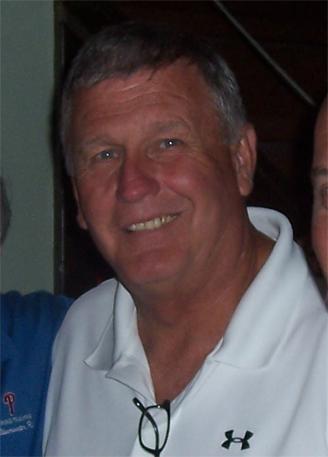At one time, he was singularly honored to have his name attached to a groundbreaking, liberating and career-extending surgery.
But today, with so many teenage athletes forced to undergo operations resulting from elbow-joint overuse, Tommy John can no longer absorb the recognition without wincing. As a result, the former Major League pitcher has an urgent message for parents.
Spare your still-developing teen the potential of a lifetime of pain and discomfort: Stop the focus on a single sport.
John is speaking up because he's alarmed by the number of teen athletes – not only pitchers, but youngsters in other sports – who are undergoing major surgery in ever-increasing numbers. While pitchers are playing baseball nearly year-round and therefore overworking their elbows at too young an age, John is just as concerned about far too many soccer players having to undergo reconstructive knee surgery for similar reasons. Their joints are not yet fully formed and the constant strain from dedicated, 11-month/year participation and travel teams frequently lead to ligament tears and painful ACL (anterior cruciate ligament) operations.
"This is about more than just baseball and elbows. It’s about the way we are raising our children," writes the 75-year-old former lefthander, who won the majority of his 288 big-league games after his revolutionary surgery in 1974. "The nation’s youth-sports industry is a $15 billion business — and more and more, that business pushes children to make decisions early about which sport they  want to play, and then to pursue that sport to the exclusion of all others," writes John, in an essay published in this month's AARP Bulletin. "And kids’ bodies are paying the price."
want to play, and then to pursue that sport to the exclusion of all others," writes John, in an essay published in this month's AARP Bulletin. "And kids’ bodies are paying the price."
I could paraphrase more of John's most urgent points, but having him state them is far more compelling.
"The rate of ACL tears in kids has been increasing by 2.3 percent per year for two decades, and about 1 in 5 teens in contact sports have had at least one concussion. And if a child is spending more than eight months annually in one sport, he or she is nearly three times more likely to experience an overuse injury in their hip or knee."
With the growth of soccer in the United States, ACL tears have, unfortunately, become commonplace. While boys are certainly afflicted, they pale in comparison to those suffered by girls, whose knee joints are more vulnerable in their teen years.
"More than 50,000 debilitating ACL injuries occur in female athletes at the high school and intercollegiate varsity levels in an average year," according to the website STOP, or Sports Trauma and Overuse Prevention, created by Dr. James Andrews, one of the nation's leading orthopedic surgeons, and his colleagues, to address this crucial health issue.
But the man who played 26 years in the big leagues laments how his name has become synonymous with so many injured teenagers – and who now require "his" surgery even more than adults do.
The elbow operation becomes necessary when the ulnar collateral ligament, the tissue which connects the lower and upper bones in the arm, is stretched, badly inflamed, ruptured or worn out from overuse. Returning the elbow to working order involves drilling holes into the ends of each bone and attaching a transplanted ligament taken from another part of the patient's body.
The name Tommy John is "now attached to something that affects more children than pro athletes," John wrote. "I was in my 30s and playing major league ball for nearly a dozen years before needing the operation. Today, 57 percent of all Tommy John surgeries are done on kids between 15 and 19 years old."
Parents, while well-intentioned, often become wrongly convinced that going along with a team's nearly-full-year program might help their child stand out in high school, and even possibly attract a valuable college scholarship. Unfortunately, that's seriously-flawed thinking. The overwhelming majority of teenagers never get that type of collegiate offer (and if they do the grant is not financially impactful). As for potentially landing a lucrative contract as a professional athlete? Those odds are stratospheric.
John's AARP essay was adapted from the forward he wrote for a new book written by his son. Tommy John III, who holds a doctorate in chiropractic health and a master’s in health and exercise science, runs a private practice in San Diego.
“It’s to educate grandparents who may not be aware of the right ways to approach youth sports today,” said the younger John, speaking to the Chicago Tribune, referring to his book, "Minimize Injury, Maximize Performance, A Sports Parent's Survival Guide." “Together, we hope to get others to understand what they could be doing to prevent their child from being injured.”




